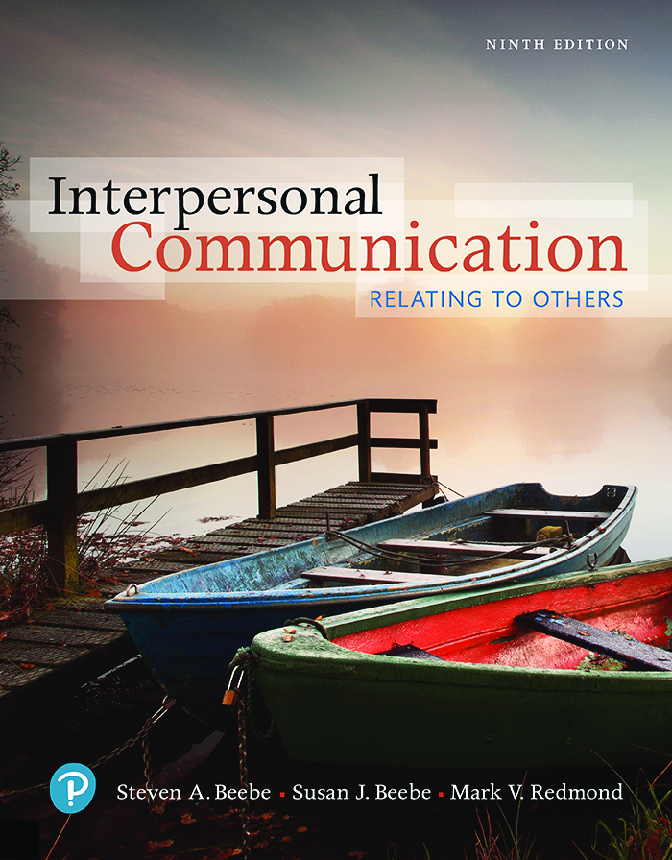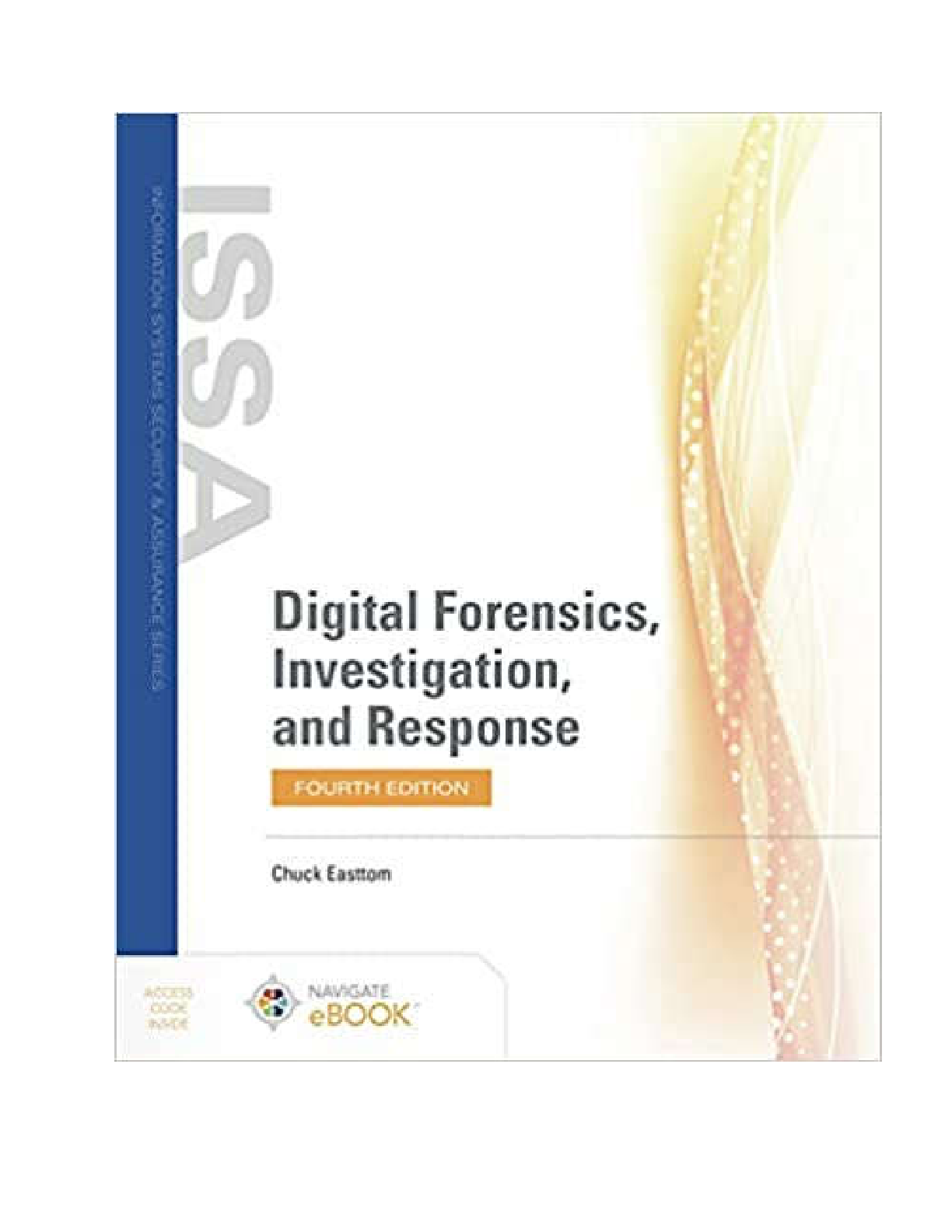Communication > eBook-PDF > Interpersonal Communication Relating to Others, 9th Edition By Steven Beebe, Susan Beebe, Mark Redmo (All)
Interpersonal Communication Relating to Others, 9th Edition By Steven Beebe, Susan Beebe, Mark Redmond [PDF] [eBook]
Document Content and Description Below
Title Page Copyright Page Dedication Contents Preface About the Authors Part 1 Interpersonal Communication Foundation 1 Introduction to Interpersonal Communication Interpersonal Communication ... Defined Interpersonal Communication Is a Distinctive Form of Communication Interpersonal Communication Involves Mutual Influence Between Individuals Interpersonal Communication Helps Individuals Manage Their Relationships Interpersonal Communication’s Importance to Your Life Improved Relationships with Family Improved Relationships with Friends and Romantic Partners Improved Relationships with Colleagues Improved Physical and Emotional Health Interpersonal Communication and the Communication Process Components of the Communication Process Models of the Communication Process Interpersonal Communication Principles Interpersonal Communication Connects Us to Others Interpersonal Communication Is Irreversible Interpersonal Communication Is Complicated Interpersonal Communication Is Governed by Rules Interpersonal Communication Involves Both Content and Relationship Dimensions Interpersonal Communication and Social Media The Presence of Social Media in Our Relationships The Effect of Social Media on Our Relationships Differences Between EMC and Face-to-Face Communication Understanding EMC Interpersonal Communication Competence Become Knowledgeable, Skilled, and Motivated Become Other-Oriented Study Guide: Review, Apply, and Assess 2 Interpersonal Communication and Self Self-Concept: Who You Think You Are Attitudes, Beliefs, and Values Reflect Your Self-Concept Mindfulness: Being Consciously Aware One or Many Selves? How Your Self-Concept Develops Self-Esteem: Your Self-Worth Facework: Presenting Your Self-Image to Others Projecting Your Face Protecting Others’ Face How to Improve Your Self-Esteem Engage in Self-Talk Visualize a Positive Image of Yourself Avoid Comparing Yourself with Others Reframe Appropriately Develop Honest Relationships Let Go of the Past Seek Support Self and Interpersonal Relationships Self and Interaction with Others Self and Your Future Self and Interpretation of Messages Self and Interpersonal Needs Self and Disclosure to Others Self and Communication Social Style Study Guide: Review, Apply, and Assess 3 Interpersonal Communication and Perception Understanding Interpersonal Perception Stage 1: Selecting Stage 2: Organizing Stage 3: Interpreting Forming Impressions of Others We Develop Our Own Theories About Others We Seek Information to Reduce Uncertainty We Form Impressions of Others Online: The Social Media Effect We Emphasize What Comes First: The Primacy Effect We Emphasize What Comes Last: The Recency Effect We Attribute Positive Qualities to Others: The Halo Effect We Attribute Negative Qualities to Others: The Horn Effect Interpreting the Behavior of Others We Attribute Motives to Others’ Behavior: Attribution Theory We Use Our Own Point of Reference About Power: Standpoint Theory We Draw on Our Own Cultural Background: Intercultural Communication Theory Identifying Barriers to Accurate Interpersonal Perception We Stereotype We Ignore Information We Impose Consistency We Focus on the Negative We Blame Others, Assuming They Have Control We Avoid Responsibility Improving Interpersonal Perception Skills Be Aware of Your Personal Perception Barriers Be Mindful of the Behaviors That Create Meaning for You Link Details with the Big Picture Become Aware of Others’ Perceptions of You Check Your Perceptions Become Other-Oriented Study Guide: Review, Apply, and Assess 4 Interpersonal Communication and Diversity: Adapting to Others Understanding Diversity: Describing Differences Sex and Gender Sexual Orientation and Gender Identity Race and Ethnicity Age Social Class Understanding Culture: Our Mental Software Individualism: One and Many Context: High and Low Gender: Masculine and Feminine Uncertainty: High and Low Tolerance Power: Centralized and Decentralized Time: Short-Term and Long-Term Happiness: Indulgent and Restrained Barriers to Effective Intercultural Communication Ethnocentrism Different Communication Codes Stereotyping and Prejudice Assuming Similarities Assuming Differences Improving Intercultural Communication Competence Develop Knowledge Develop Motivation: Strategies to Accept Others Develop Skill Study Guide: Review, Apply, and Assess Part 2 Interpersonal Communication Skills 5 Listening and Responding Skills Listening Defined Selecting Attending Understanding Remembering Responding Listening Styles Relational Listening Style Analytical Listening Style Critical Listening Style Task-Oriented Listening Style Gender and Listening Style Benefits of Understanding Your Listening Style Listening Barriers Being Self-Absorbed Unchecked Emotions Criticizing the Speaker Differing Speech Rate and Thought Rate Information Overload External Noise Listener Apprehension Listening Skills How to Improve Listening Comprehension Skills How to Improve Empathic Listening Skills How to Improve Critical Listening Skills Responding Skills How to Improve Accurate Responding Skills How to Improve Empathic Responding Skills Confirmation Skills How to Provide Confirming Responses How to Avoid Disconfirming Responses Study Guide: Review, Apply, and Assess 6 Verbal Communication Skills How Words Work Words Are Symbols Words Become Words for a Variety of Reasons Words Are Culture-Bound The Power of Words Words Create Perceptions Words Influence Thoughts Words Influence Actions Words Affect and Reflect Culture Words Make and Break Relationships Clues to Our Relationships Are Found in Our Word Choice Clues to Our Relationships Are Found in What We Don’t Say Clues to Our Online Relationships Are Found in Our Tweets, Texts, and Posts How to Manage Misunderstandings Be Aware of Missed Meaning Be Clear Be Specific Be Aware of Changes in Meaning Be Aware of Polarizing Either-Or Extremes Be Unbiased How to Use Words of Support and Comfort Describe Your Feelings, Rather Than Evaluate Behavior Solve Problems Rather Than Attempt to Control Be Genuine Rather Than Manipulative Empathize Rather Than Remain Detached Be Flexible Rather Than Rigid Present Yourself as Equal Rather Than Superior How to Have a Conversation Starting a Conversation Sustaining a Conversation How to Apologize How to Be Assertive Describe Disclose Identify Effects Be Silent Paraphrase Study Guide: Review, Apply, and Assess 7 Nonverbal Communication Skills Identifying the Importance of Nonverbal Communication Nonverbal Messages Are the Primary Way We Communicate Our Feelings and Attitudes Nonverbal Messages Are Usually More Believable Than Verbal Messages Nonverbal Messages Work with Verbal Messages to Create Meaning Nonverbal Messages Help People Respond and Adapt to Others Nonverbal Messages Play a Major Role in Interpersonal Relationships Understanding Nonverbal Communication Codes Body Movement and Posture Eye Contact Facial Expression Vocal Cues Our Vocal Cues Provide Clues about Our Relationships Space Territory Touch Appearance Improving Your Skill in Interpreting Nonverbal Messages Look for Dimensions of Meaning in Nonverbal Messages Use Effective Strategies for Interpreting Nonverbal Messages Be Aware of Limitations When Interpreting Nonverbal Messages Improving Your Skill in Expressing Nonverbal Messages Be Mindful of Your Nonverbal Behavior Observe Others’ Reactions to Your Nonverbal Behavior Ask Others About Your Nonverbal Behavior Practice Your Nonverbal Behavior Study Guide: Review, Apply, and Assess 8 Conflict Management Skills Conflict Defined Conflict Elements Conflict Triggers Conflict as a Process Conflict Misconceptions Misconception 1: Conflict Is Always a Sign of a Poor Interpersonal Relationship Misconception 2: Conflict Can Always Be Avoided Misconception 3: Conflict Always Occurs Because of Misunderstandings Misconception 4: Conflict Can Always Be Resolved Conflict Types Pseudoconflict: Misunderstandings Simple Conflict: Different Positions on the Issues Ego Conflict: Conflict Gets Personal Conflict and Power Power Principles Power Sources Power to Persuade Power Negotiation Conflict Management Styles Avoidance Accommodation Competition Compromise Collaboration What Is the Best Conflict Management Style? Conflict Management Skills Manage Your Emotions Manage Information Manage Goals Manage the Problem Study Guide: Review, Apply, and Assess Part 3 Interpersonal Communication in Relationships 9 Understanding Interpersonal Relationships Interpersonal Relationships Defined Shared Perception Ongoing Interdependent Connection Relational Expectations Interpersonal Intimacy and Affection Circumstance or Choice Power Genesis of Interpersonal Relationships: Attraction Communication and Attraction Sources of Initial Attraction Sources of Both Initial and Long-Term Attraction Stages of Interpersonal Relationship Development Relational Escalation Relational De-Escalation Principles Underlying Relational Stages Theories of Interpersonal Relationship Development Social Exchange Theory Relational Dialectics Theory Self-Disclosure and Social Penetration Theory Study Guide: Review, Apply, and Assess 10 Managing Relationship Challenges and the Dark Side of Interpersonal Communication and Relationsh When Relationship Expectations Are Violated Understanding Relational Expectations and Violations Responding with Discussion Responding with Forgiveness Examining a Model of Forgiveness Responses Responding with Retaliation Maintaining Long-Distance Relationships (LDRs) and Relationships that Challenge Social Norms Maintaining Long-Distance Relationships (LDRs) Relationships That Challenge Social Norms Addressing Grief and Delivering Bad News The Dark Side of Interpersonal Communication Deception Communication That Hurts Feelings The Dark Side of Interpersonal Relationships Jealousy Serial Argument and Verbal Aggression Relational Turbulence Unwanted Attention Interpersonal Relationship De-Escalation and Termination Signs of Relationship Problems Repair and Rejuvenation The Decision to End a Relationship How Relationships End Reasons for De-Escalating and Terminating The Relational Dissolution Process Strategies for Ending Relationships Study Guide: Review, Apply, and Assess 11 Interpersonal Relationships: Friendship and Romance Friendship Making Friends Friendships at Different Stages in Life Same-Sex Friendships Cross-Sex Friendships Diverse Friendships Romantic Relationships Qualities of Romantic Relationships From Friendship to Romance Dating Unrequited Romantic Interest (URI) Interpersonal Relationship Strategies Strategies Used Primarily to Initiate a Relationship Strategies Used to Initiate and/or Escalate Relationships Strategies Used to Escalate and/or Maintain Relationships Study Guide: Review, Apply, and Assess 12 Interpersonal Relationships: Family and Workplace Family Relationships: Definition, Models, and Strategies for Improvement Family Defined Family Types with Children Two Models of Family Interaction Strategies for Improving Family Communication Specific Family Relationships: Committed Partners, Parents and Children, and Siblings Committed Partners Parents and Children Parents and Adult Children Siblings Informal Workplace Relationships: Friendship and Romance Workplace Friendships Workplace Romances The Directions of Workplace Communication Upward Communication: Talking with Your Boss Downward Communication: Talking with Your Subordinates Horizontal Communication: Talking with Your Colleagues Outward Communication: Talking with Your Customers The Dark Side of Workplace Communication Study Guide: Review, Apply, and Assess Notes Glossary Index Text Credits Back Cover [Show More]
Last updated: 1 year ago
Preview 1 out of 600 pages
Instant download

Buy this document to get the full access instantly
Instant Download Access after purchase
Add to cartInstant download
Reviews( 0 )
Document information
Connected school, study & course
About the document
Uploaded On
Dec 22, 2022
Number of pages
600
Written in
Additional information
This document has been written for:
Uploaded
Dec 22, 2022
Downloads
0
Views
47



















.png)






